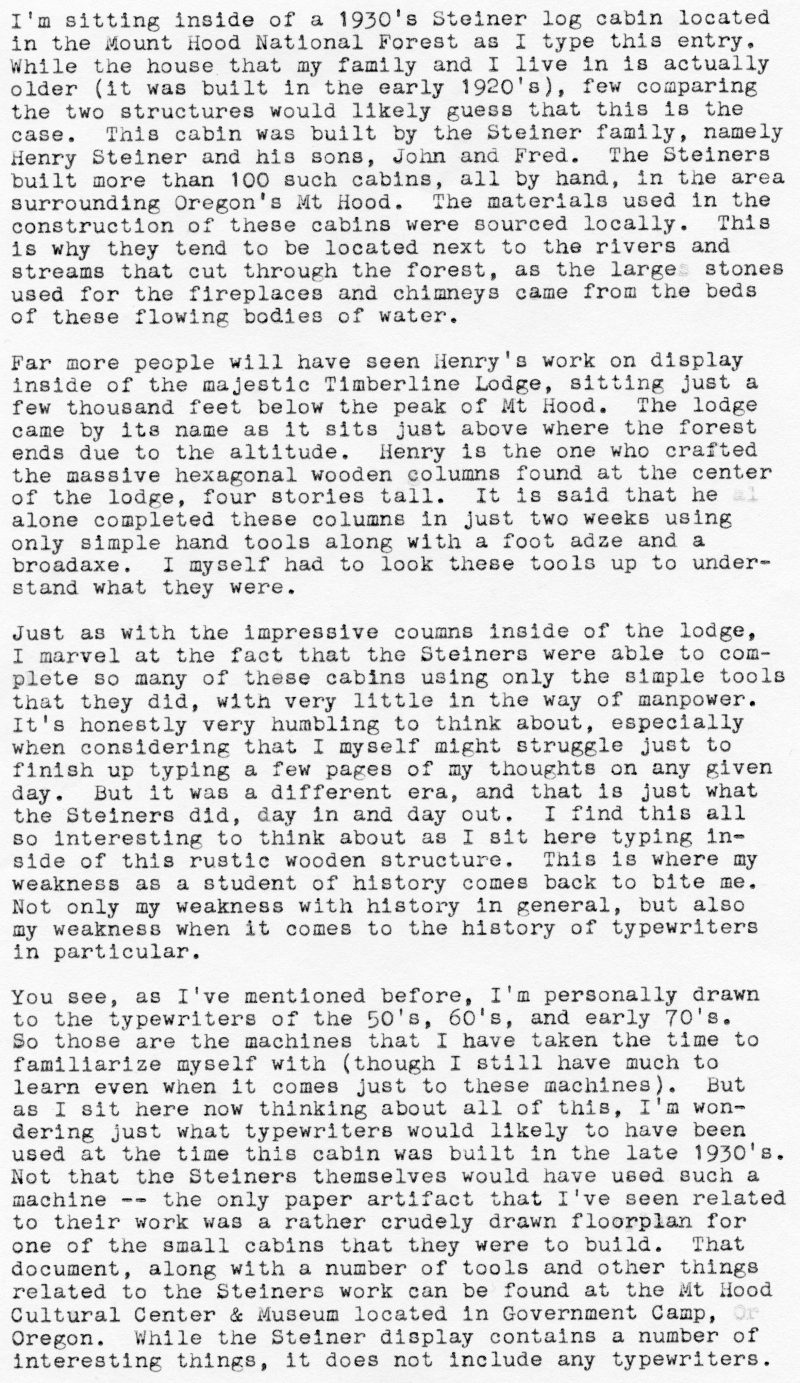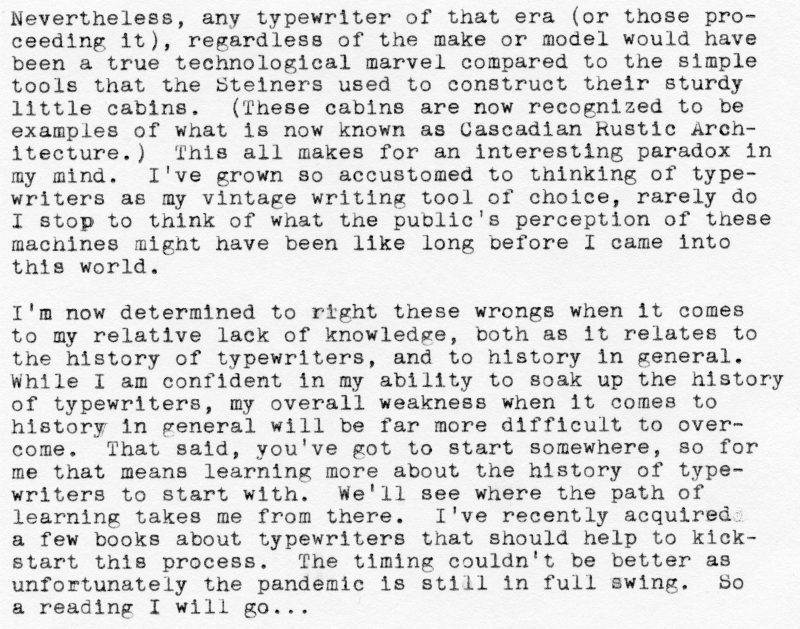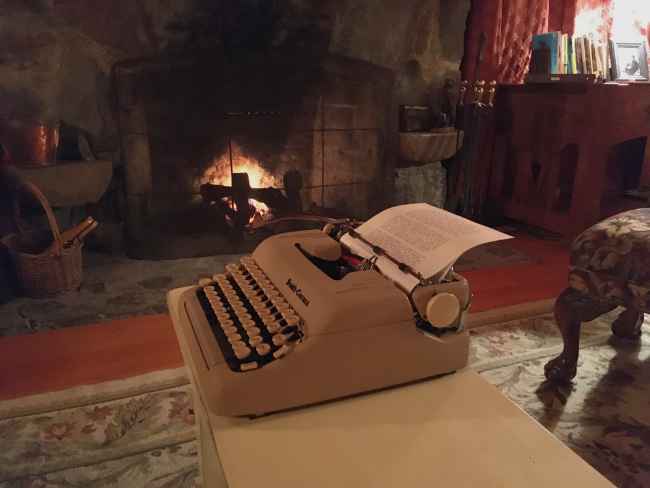

I’m sitting inside of a 1930’s Steiner log cabin located in the Mount Hood National Forest as I type this entry. While the house that my family and I live in is actually older (it was built in the early 1920’s), few comparing the two structures would likely guess that this is the case. This cabin was built by the Steiner family, namely Henry Steiner and his sons, John and Fred. The Steiners built more than 100 such cabins, all by hand, in the area surrounding Oregon’s Mt Hood. The materials used in the construction of these cabins were sourced locally. This is why they tend to be located next to the rivers and streams that cut through the forest, as the large stones used for the fireplaces and chimneys came from the beds of these flowing bodies of water.
Far more people will have seen Henry’s work on display inside of the majestic Timberline Lodge, sitting just a few thousand feet below the peak of Mt Hood. The lodge came by its name as it sits just above where the forest ends due to the altitude. Henry is the one who crafted the massive hexagonal wooden columns found at the center of the lodge, four stories tall. It is said that he alone completed these columns in just two weeks using only simple hand tools along with a foot adze and a broadaxe. I myself had to look these tools up to understand what they were.
Just as with the impressive columns inside of the lodge, I marvel at the fact that the Steiners were able to complete so many of these cabins using only the simple tools that they did, with very little in the way of manpower. It’s honestly very humbling to think about, especially when considering that I myself might struggle just to finish up typing a few pages of my thoughts on any given day. But lt was a different era, and that is just what the Steiners did, day in and day out. I find this all so interesting to think about as I sit here typing inside of this rustic wooden structure. This is where my weakness as a student of history comes back to bite me. Not only my weakness with history in general, but also my weakness when it comes to the history of typewriters in particular.
You see, as I’ve mentioned before, I’m personally drawn to the typewriters of the 50’s. 60’s, and early 70’s. So those are the machines that I have taken the time to familiarize myself with (though I still have much to learn even when it comes just to these machines). But as I sit here now thinking about all of this, I’m wondering just what typewriters would likely to have been used at the time this cabin was built in the late 1930’s. Not that the Steiners themselves would have used such a machine — the only paper artifact that I’ve seen related to their work was a rather crudely drawn floorplan for one of the small cabins that they were to build. That document, along with a number of tools and other things related to the Steiners work can be found at the Mt Hood Cultural Center & Museum located in Government Camp, Oregon. While the Steiner display contains a number of interesting things, lt does not include any typewriters.
Nevertheless, any typewriter of that era (or those proceeding it), regardless of the make or model would have been a true technological marvel compared to the simple tools that the Steiners used to construct their sturdy little cabins. (These cabins are now recognized to be examples of what is now known as Cascadian Rustic Architecture. ) This all makes for an interesting paradox in my mind. I’ve grown so accustomed to thinking of typewriters as my vintage writing tool of choice, rarely do I stop to think of what the publlc’s perception of these machines might have been like long before I came into this world.
I ‘m now determined to right these wrongs when it comes to my relative lack of knowledge, both as it relates to the history of typewriters, and to history in general. While I am confident in my ability to soak up the history of typewriters, my overall weakness when it comes to history in general will be far more difficult to overcome. That said, vou’ve got to start somewhere, so for me that means learning more about the history of typewriters to start with. We’ll see where the path of learning takes me from there. I’ve recently acquired a few books about typewriters that should help to kickstart this process. The timing couldn’t be better as unfortunately the pandemic is still in full swing. So a reading I will go…


Typewriter history is part of the fun of having and collecting typewriters.
I’d love to visit one of those old cabins. It must be quite relaxing to be able to be there and type.
I’ve put together a pretty good reading list, and therefore should be having a lot of fun when it comes to learning about these machines. Yes, a cabin makes for a great typing environment, allowing one to focus on little more than the writing itself.
What a great setting within which to settle in and write. I hope your history lessons prove fruitful.
Thanks Joe. Hopefully I can change my previous luck with history studies this time around.
A Google search tells me that a particularly spacious example of one of these magnificent cabins is actually for sale (and at what my urban sensibilities consider a very reasonable price, too)! I’m shocked—I would expect most of these cabins to be on the National Registry of Historic Places, much as most of Frank Lloyd Wright’s houses are.
You won’t have any trouble catching up on history. When the interest is there, learning follows at a dead run.
On thing to keep in mind when it comes to those cabins located within the boundaries of the Mt Hood National Forest is that the purchase price is for the cabin only. The land the cabins sit on is leased from the National Forest Service. Also, not every cabin advertised as a Steiner cabin was actually built by the Steiner family. Still, there are plenty of wonderful, interesting rustic cabins spread throughout the Mt Hood area, be they Steiner cabins or otherwise.
Ooh, you’ll love a good 1930’s machine in good shape with fresh rubber, should you decide to adopt one. They have a mechanical directness and feature thriftiness that is very pure as a typing experience. Fresh rubber is essential, though, otherwise, you’re typing on concrete and it’s a shrill experience. My personal favorite 1930’s portable:
https://typewriterdatabase.com/1933-monarch-remington-remie-scout-model.14.typewriter
Always the enabler! I love the fact that the example you’ve shared also features rubber provided by the Ames company before they went out of business. History, on top of more history. Pretty cool all in all.